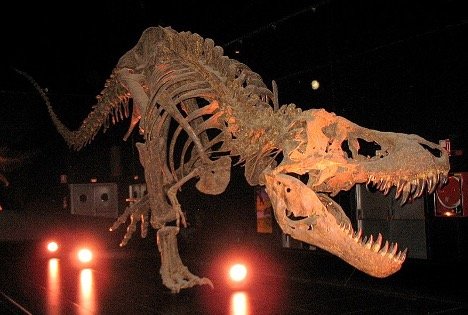If We Don’t Move He Can’t See Us, By Tom Hutchison
Throughout the Jurassic Park franchise, there has been a recurring idea that a Tyrannosaurus rex couldn’t see things that weren’t moving. Earnest protagonists would freeze in hopes that their human forms would somehow blend into the background. They prevented others from screaming or running, relying on the animal’s lack of visual acuity to save them from certain death. Now, I don’t know if that’s true. I don’t know how they could determine that a tyrannosaurus can or can’t see very well from the few fossilized bones we’ve found. What I do know is that if ads don’t move, people won’t see them.

Digital ads, much like fictional paleontologists, have a tendency to blend into the background. This is especially true for pages where the ad density is high or the content is varied or visually complex. Ads can fall victim to inattentional blindness, which is when a person is concentrating so hard on one thing that they fail to see what’s right in front of them. It’s the reason I can never find my keys and perhaps it’s the reason a T. rex would stop seeing people who stop moving.
The best way to combat inattentional blindness is to introduce some motion into the ad. When someone sees a movement, any movement, they momentarily pause to evaluate it. Their eyes focus on the source of that activity to determine what it is. Behavioral psychologists refer it as changing the locus of visual selection and when a person re-focuses their eyes, they re-focus their attention. In that instance, when they have turned their eyes to the movement in the ad, it’s possible convey the brand message.
Videos are a great way to introduce movement, but even simple animated ads provide a performance dividend compared to static content. To maximize ad effectiveness, there needs to be clear intent though. Random movements are less valuable than animations that tell a story or frame content in a useful way. Some techniques to consider include:
Highlight Important Content
Use subtle animations to emphasize the most significant content, bringing the customer’s focus to a specific spot in the ad. For instance, grow a shadow around a call to action. Slide the brand’s tag line onto the creative after it loads or change the text color of a special price to make it progressively more visible.
Contrast Opposing Ideas
Animated effects can structure content that compares or contrasts a brand or product. Display information about a competitor’s feature and then pop in an alternative offering. The movement will attract the customer’s attention, leading them to evaluate the information which is still in short-term memory when the counterpoint is presented.
Display Sequenced Information
Few stories are told with the beginning and the end happening at the same time. Events and themes build upon each other until a final conclusion is reached. Animation tells a story in the context of an ad by introducing information progressively. Scaling one image after another or dropping in a series of bullet points will take the customer on a journey.
Very few tyrannosaurus fossils have ever been found, only about 30 complete skeletons are known to exist, so it’s likely that we don’t know that much about them. We don’t really know how well they could see. Conversely, we do know about human vision. We know that people will miss things if they’re concentrating on something else. We understand that people notice movement which causes them to focus. Planners should consider the use of movement through animations or videos to grab people’s attention. Building strategies that use consciously use animation will result in more effective outcomes.






